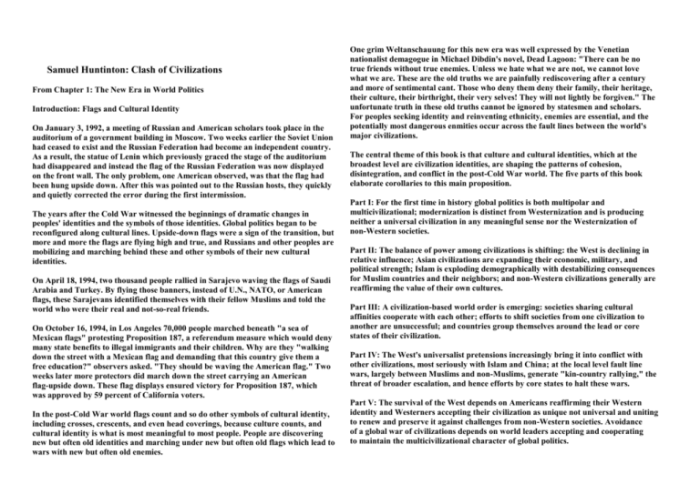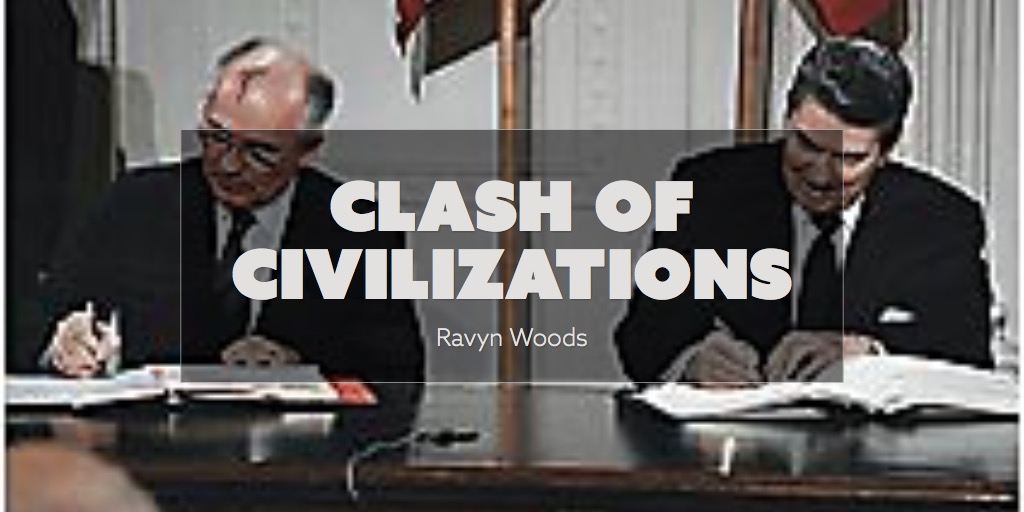In the realm of human history, the collision of cultures chapter 1 stands as a pivotal force, shaping civilizations and transforming individual and collective identities. This chapter delves into the multifaceted dynamics of cultural encounters, examining their historical significance, transformative power, and enduring impact on societies worldwide.
Throughout history, cultural collisions have played a profound role in shaping global events. From the Silk Road’s vibrant exchange of ideas to the transformative encounters between European explorers and indigenous populations, these interactions have left an indelible mark on human civilization.
Motivated by factors such as trade, exploration, and conquest, cultural collisions have both enriched and challenged societies, leading to cultural exchange, adaptation, and innovation.
The Historical Context of Cultural Collisions: The Collision Of Cultures Chapter 1

Throughout history, cultural collisions have played a pivotal role in shaping global events. These encounters have sparked innovation, conflict, and the exchange of ideas, leaving an enduring impact on civilizations worldwide.
One notable example is the Silk Road, an ancient network of trade routes that connected the East and West. This cultural collision facilitated the exchange of goods, technologies, and religious beliefs, leading to the spread of Buddhism from India to China and the introduction of papermaking to Europe.
Motivations for Cultural Collisions
Cultural collisions have been driven by various motivations, including:
- Economic Factors:The pursuit of trade and resources has often led to encounters between different cultures.
- Political Expansion:Empires and nations have sought to expand their territories and influence, resulting in cultural interactions and conflicts.
- Religious Beliefs:The spread of religions has been a major catalyst for cultural collisions, as missionaries and pilgrims have encountered and influenced local populations.
- Migration:The movement of people from one region to another has brought different cultures into contact, leading to both assimilation and conflict.
Cultural Identity and Transformation

Cultural identity refers to the unique characteristics, beliefs, values, and practices that define a particular cultural group. It shapes individual and collective experiences, providing a sense of belonging, continuity, and purpose. Cultural collisions occur when two or more distinct cultural groups interact, leading to exchanges, adaptations, and potential transformations in cultural identities.
Cultural collisions can challenge cultural identities by exposing individuals to different perspectives, values, and ways of life. This can lead to a questioning of existing beliefs and practices, and a re-evaluation of one’s own cultural identity. In some cases, cultural collisions can reinforce cultural identities by strengthening group cohesion and reaffirming shared values in the face of external influences.
Examples of Cultural Identity Transformation
Throughout history, cultural encounters have had a profound impact on cultural practices, beliefs, and values. For instance, the introduction of Christianity to Europe led to the adoption of new religious beliefs and practices, while also influencing social structures and artistic expressions.
Similarly, the colonization of Africa by European powers resulted in the imposition of Western values and institutions, which had lasting effects on African cultural identities.
In contemporary societies, globalization and increased migration have facilitated cultural exchanges and interactions on a global scale. This has led to the emergence of hybrid cultural identities, where individuals adopt elements from multiple cultures to create their own unique cultural expression.
Power Dynamics and Cultural Exchange

Power dynamics are an inherent part of cultural collisions, as different cultures possess varying levels of influence and resources. These power imbalances can significantly shape the exchange of ideas, beliefs, and practices between cultures.
In some cases, power dynamics can facilitate positive cultural exchange. When a more powerful culture respects and values the traditions of a less powerful culture, it can lead to a mutually beneficial exchange of knowledge and perspectives. For example, the incorporation of indigenous healing practices into modern medicine has enriched the field and provided new insights into holistic health.
Negative Impacts
However, power imbalances can also lead to negative consequences in cultural exchange. When a more powerful culture dominates and suppresses the cultural expressions of a less powerful culture, it can result in cultural erosion and loss of identity. For instance, the forced assimilation of indigenous peoples into dominant cultures has led to the loss of traditional languages, customs, and beliefs.
Positive Impacts
Conversely, power dynamics can also drive positive cultural exchange when a more powerful culture uses its influence to promote and support the cultural traditions of a less powerful culture. This can help preserve and revitalize endangered cultural practices and foster a sense of pride and cultural identity.
For example, government initiatives to support indigenous language revitalization have contributed to the preservation of endangered languages and the revitalization of cultural practices.
Cultural Syncretism and Hybridity
Cultural syncretism is the process of merging or combining different cultural elements to form a new cultural expression. It often occurs when two or more cultures come into contact and exchange ideas, beliefs, and practices. The resulting hybrid culture can be a unique blend of the original cultures, incorporating elements from both.
Cultural syncretism has played a significant role in the formation of many new cultures around the world. For example, the culture of the United States is a hybrid of European, African, and Native American influences. The culture of Brazil is a blend of Portuguese, African, and indigenous Brazilian elements.
And the culture of India is a complex mix of Hindu, Muslim, and Western influences.
Factors Contributing to Cultural Hybridity
Several factors can contribute to the creation and acceptance of cultural hybrids. These include:
- Proximity and interaction:When two or more cultures are in close proximity and have frequent interactions, they are more likely to exchange ideas and practices.
- Power dynamics:The power dynamics between cultures can also influence the formation of cultural hybrids. When one culture is dominant over another, it may impose its own cultural elements on the weaker culture.
- Economic factors:Economic factors can also play a role in cultural syncretism. When cultures trade with each other, they often exchange cultural goods and ideas.
- Social factors:Social factors, such as marriage, migration, and education, can also contribute to the formation of cultural hybrids.
The Impact of Cultural Collisions on Language

Cultural collisions can have a profound impact on language, leading to the adoption of new words, phrases, and grammatical structures. This process of language change is known as language contact, and it can occur when two or more languages come into contact with each other through trade, conquest, or migration.
One of the most common ways that languages are influenced by cultural encounters is through the adoption of new words. For example, the English language has adopted many words from French, such as “rendezvous” and “cuisine.” Similarly, the Spanish language has adopted many words from Arabic, such as “guitarra” and “almuerzo.”
The Role of Language in Cultural Exchange
Language plays a vital role in facilitating and shaping cultural exchange. It is through language that we are able to communicate our ideas, values, and beliefs. When two cultures come into contact, language can serve as a bridge between them, allowing for the exchange of knowledge, ideas, and technology.
The Role of Technology in Cultural Collisions

Technology has played a significant role in facilitating cultural collisions and the exchange of ideas and practices across different cultures. The advent of the internet, social media, and various communication technologies has enabled individuals from diverse cultural backgrounds to connect, share information, and engage in cross-cultural interactions.
Technology has both positive and negative effects on cultural understanding. On the one hand, it can promote understanding by providing access to a wider range of cultural perspectives, fostering empathy, and breaking down stereotypes. On the other hand, it can also hinder understanding by creating echo chambers, reinforcing existing biases, and perpetuating misinformation.
Bridging Cultural Gaps
Technology has been instrumental in bridging cultural gaps and fostering cross-cultural communication. For example, social media platforms have allowed people from different cultures to connect and share their experiences, perspectives, and traditions. Video conferencing tools have enabled real-time communication and collaboration between individuals across geographical boundaries, facilitating cultural exchange and understanding.
Challenges and Considerations, The collision of cultures chapter 1
Despite the potential benefits of technology in promoting cultural collisions, it is important to acknowledge the challenges and considerations involved. The spread of misinformation and disinformation online can lead to misunderstandings and conflicts between different cultures. Additionally, the use of technology can reinforce existing power imbalances and create digital divides, limiting access to information and resources for certain groups.
Expert Answers
What are the key factors that drive cultural collisions?
Cultural collisions are primarily driven by factors such as trade, exploration, migration, and conquest. These interactions bring different cultures into contact, leading to the exchange and negotiation of ideas, beliefs, and practices.
How do cultural collisions impact cultural identity?
Cultural collisions can challenge, reshape, or reinforce cultural identities. Encounters with other cultures can lead to the adoption of new practices, beliefs, and values, while also prompting individuals and communities to reflect on their own cultural heritage.
What is cultural syncretism, and how does it relate to cultural collisions?
Cultural syncretism refers to the blending of elements from different cultures, resulting in the formation of new cultural expressions. Cultural collisions often facilitate cultural syncretism, as individuals and communities seek to reconcile and integrate diverse cultural influences.